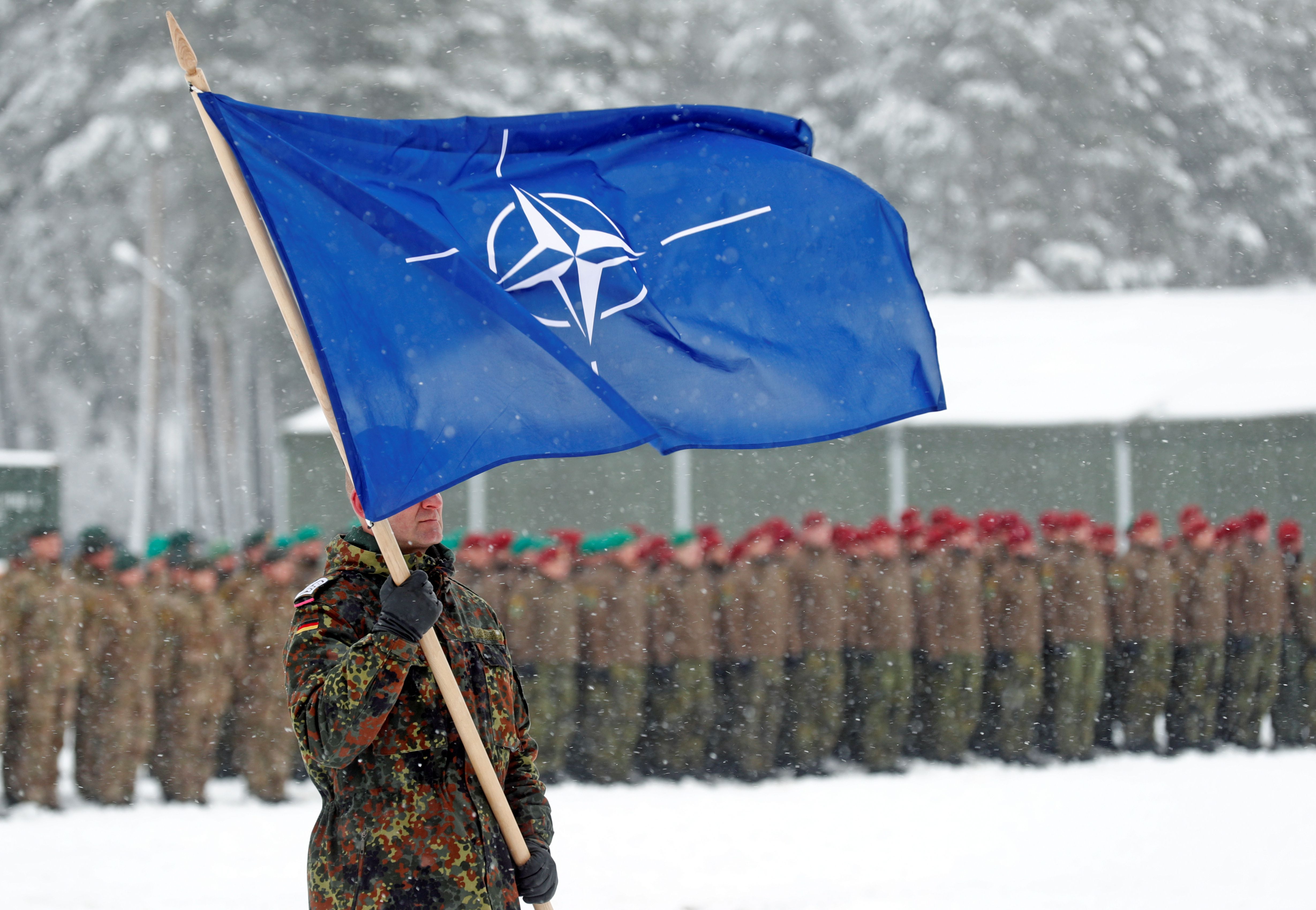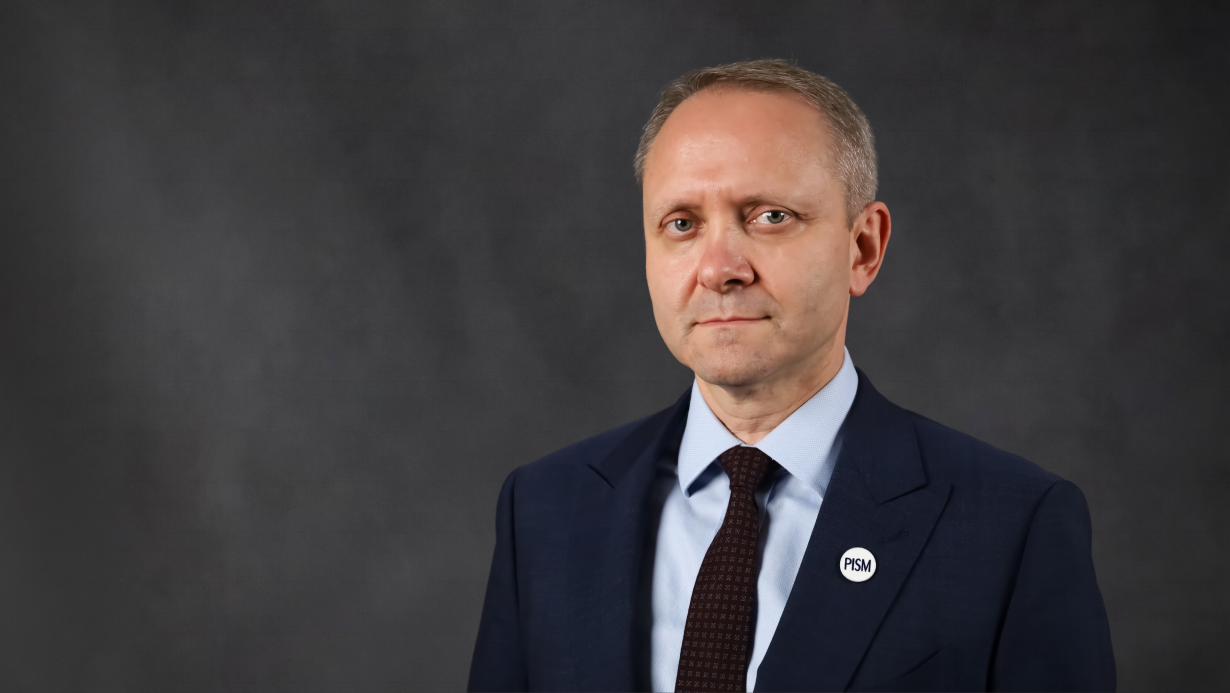NATO on the Road to a New Strategy

Since the end of the Cold War, NATO has adopted unclassified political and military strategies that have been updated on average every 10 years (1991, 1999, 2010). The latest strategy facilitated NATO’s adaptation to the threat of terrorism and the need for crisis-management missions. However, involvement in the mission in Afghanistan, insufficient defence spending by numerous allies, and attempts to build a partnership with Russia made it difficult to develop collective-defence military capabilities and command structures. It was only after Russia’s annexation of Crimea in 2014 that NATO began to strengthen the military potential necessary for defence and deterrence, including by deploying forces on the Alliance’s Eastern Flank. In 2019, the allies adopted the first classified military strategy since the end of the Cold War, which adapts NATO to new threats, including from Russia.
The Road to the Report—Challenges to Cohesion
The military adaptation of NATO was accompanied by political tensions, which arose from the different expectations towards the Alliance. Some states demanded greater support in stabilising Europe’s southern neighbourhood and in fighting terrorism. The U.S. increasingly perceived the rise of authoritarian China as the main threat and asked that its allies limit cooperation with that country in areas that threaten the Alliance’s security (e.g., investments in critical infrastructure) and increase their defence spending. President Donald Trump intensified fears in Europe that the U.S. may withdraw troops from Europe. In 2019, serious tensions were caused by the withdrawal of some U.S. troops from Syria and the Turkish intervention in that country, which could have made it difficult to fight the so-called Islamic State (ISIS). As a result of these decisions, French President Emmanuel Macron criticised the Alliance, stating that it was suffering from “brain death” and called for strengthening the EU’s strategic autonomy. In response to such criticism, NATO leaders at their London meeting in December 2019 tasked the Alliance Secretary General to steer a political process that would help strengthen NATO’s political cohesion and consultation mechanisms. For this purpose, Jens Stoltenberg appointed a 10-person group of experts consisting of representatives of Denmark, France, the Netherlands, Canada, Germany, the U.S., Poland, Turkey, the United Kingdom, and Italy. He also initiated a process of broad public discussion on the future of the Alliance—NATO2030.
Main Theses of the Report
According to the experts, NATO must adapt to a new strategic situation in which the security of the Alliance will be dominated by rivalry with authoritarian China and Russia—described as “systemic rivals”. Russia will be the main military threat to NATO in the treaty (Euro-Atlantic) area. China does not yet pose a military threat to the Alliance but it may have a negative impact on the security of allies and cause divisions among them. At the same time, the Alliance should be prepared, among other things, to deal with terrorist and hybrid threats, climate change, or challenges related to the development of emerging and disruptive technologies.
According to the experts, NATO should continue to perform three missions: collective defence, crisis response, and cooperative security. In relations with Russia, the Alliance should continue its two-track policy based on deterrence and defence, and dialogue. It is necessary to develop a common policy towards China in those areas where it poses a challenge to the security of the Euro-Atlantic area (e.g., in space and cyberspace) or may limit the ability to conduct NATO missions. Rivalry with Russia and China and the strengthening of political cohesion also require the renewal of NATO as a community of values, such as democracy and the rule of law. The Alliance should play a greater role in coordinating the development of new technologies, strengthening members’ resilience to non-military threats, and supporting efforts to reduce greenhouse gas emissions.
The recommendations of the experts also meet the expectations of countries that prioritise the fight against terrorism and stabilising the broadly understood “South”. The experts recommend, among others, better integration of the fight against terrorism with main Alliance missions and a more flexible approach to so-called coalitions of the willing. They emphasise that the coordinated development of the EU’s defence potential may strengthen NATO, but “strategic autonomy” should not undermine Alliance cohesion. To reduce the risk of political tensions, they recommend more frequent use of informal consultations. When making decisions, they recommend maintaining the principle of consensus but limiting the possibility of a veto below the level of Foreign Ministers. They also call for the commencement of work on a new strategy.
Practical and Political Significance of the Report
So far, there has been no consensus in NATO about the need to start work on a new strategy for fear of revealing new divisions. That is why the Allies asked the Secretary General to lead a political process (called “strategic reflection”), whose purpose was limited to the political dimension of NATO and consultation mechanisms. However, the chief diplomat of the Alliance is also using this process to prepare the ground for the beginning of the negotiations on the new strategy.
The group of experts consulted all NATO countries and its recommendations largely take into account the interests of the Allies. Additionally, the preparation of the report by experts from countries with different threat perceptions also signals that in the case of the new strategy it would be possible to develop consensus. As part of the NATO2030 strategic reflection process, the Secretary General, with the support of the Alliance’s structures, also conducts additional activities in the field of public diplomacy. They include seminars and debates, including with the participation of young leaders. In his speeches, Stoltenberg speaks of new challenges for NATO and the need to increase the global dimension of the Alliance. Such combined efforts can increase public support for NATO’s goals and strengthen political consensus within the Alliance. Another element of this process will be Stoltenberg’s presentation of selected recommendations at this year’s NATO leaders’ summit.
Conclusions and Perspectives
At the Alliance summit this year, the exact date of which will be set after the new U.S. administration is in place, the Allies may limit themselves to approving some of the recommendations. The NATO2030 process, however, increases the chances that they will decide to start work on updating the strategy. NATO structures, under the leadership of the Secretary General, will then prepare a draft document that will be negotiated directly by the 30 member states. As the report indicates much greater consensus within NATO than previous tensions suggest, the strategy could be negotiated within months and approved at the next summit in 2022.
In many areas, the recommendations are based on the consensus already developed by the member states. This applies to the two-track policy of deterrence and dialogue with Russia. Such dialogue is to facilitate, for example, the negotiation of new arms-control agreements and does not mean a return to cooperation until Russia returns to compliance with international law.
Recommendations regarding the policy towards China, coalitions of the willing, or decision-making mechanisms do not threaten the Alliance’s primary mission, which is collective defence, limited to the Euro-Atlantic area. However, they can increase the chance of strengthening NATO political cohesion, on which the credibility of the Alliance’s main mission depends. Nevertheless, a lot will depend on how the strategy will define the balance between collective defence and the Alliance’s other tasks. In the past, some countries have used ambiguity in wording as a pretext to limit investment in military capabilities necessary for defence and deterrence. Although the development of a separate military strategy by the Alliance should reduce the risk of such actions, they cannot be ruled out, especially if the economic crisis caused by the pandemic leads to cuts in defence spending. Therefore, it will be in Poland’s interest to support NATO’s adaptation to new challenges, while confirming that its goal is to maintain the Alliance’s defence and deterrence function.


